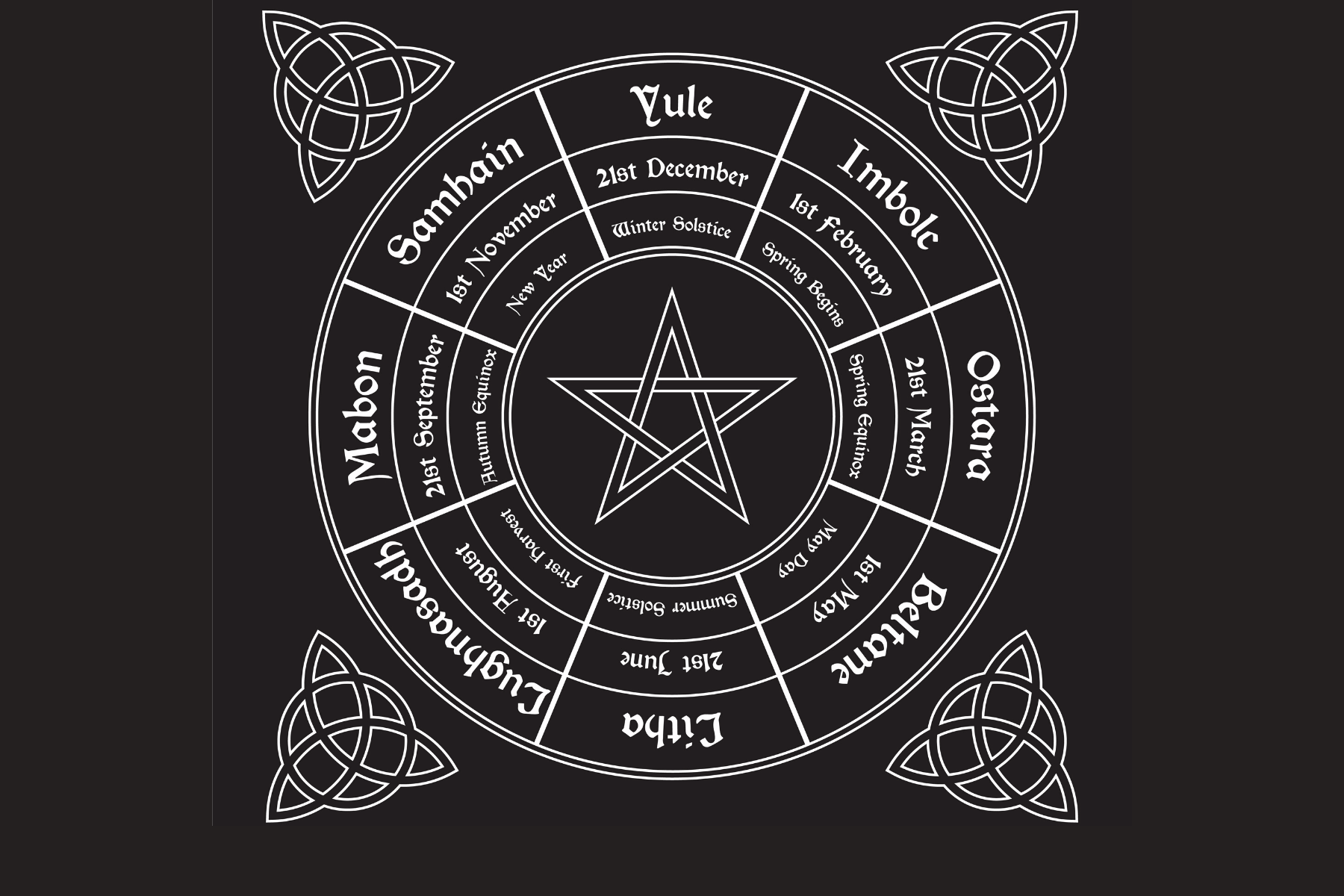From the outside looking in, it may seem like pagan holidays such as Yule, Samhain, and Beltane are a good excuse to party. Well, to be honest, we do have some pretty fun times. But these days are so much more than simple celebrations.
Though paganism is more of an umbrella term that carries hundreds of beautiful and, often, very varied beliefs, many pagans recognize the Wheel of the Year.
What is the Wheel of the Year?
Simply put, the wheel of the year is the calendar of the eight sabbats (or holy days). Each sabbat guides us through the changing of the seasons; they tell the story of the everlasting cycle of birth, death, and rebirth.
You may hear them referred to as the greater sabbats and lesser sabbats or the sabbats and esbats. It’s important to note that greater and lesser do not denote the importance of any sabbat over another, but rather, it serves as a differentiator.
What’s the difference between the holidays?
Whatever you call these powerful, magical days they’re comprised of four solar holidays and four Earth festivals.
The solar holidays (lesser sabbats) are made up of two solstices (summer and winter) and two equinoxes (fall and spring). The solstices mark the days of the year when the sun is the farthest distance north or south from the equator. Or, in other words, the solstices are the longest and shortest days of the year, respectively. The equinoxes refer to the two times of year the sun is above the equator and blesses us with a day and night of equal length.
- Yule (Winter Solstice)
- Litha (Summer Solstice)
- Ostara (Spring Equinox)
- Mabon (Autumn Equinox)
The Earth festivals (greater sabbats) denote the midpoint or cross-quarter days and typically mark the midway transition from one season to another.
- Samhain (Fall-Winter)
- Imbolc (Winter-Spring)
- Beltane (Spring-Summer)
- Lammas/Lughnasadh (Summer-Fall)
Don’t worry, we’ll dive a little deeper into the details of each day in part 2 of this blog.
Where does the Wheel of the Year come from?
Much like many pagan traditions, the Wheel of the Year is a beautiful tapestry of traditions brought together to create a magical tapestry. As pagan comes from the Latin paganus, which means “villager” or “rustic” or “of the country”, one might even consider this to mean “of the Earth”. So, it’s no wonder that one string that runs through every pagan faith is a close connection with the Earth.
It’s believed that the solar days (Yule, Litha, Ostara, and Mabon) as we know them today originated in the Germanic traditions, while the Celts are more closely associated with the Earth festivals (Samhain, Imbolc, Beltane, Lughnasadh)
But, regardless of where these days were originally celebrated, they’re now recognized and celebrated by pagans of all beliefsets around the world.
How do you celebrate the Wheel of the Year?

The short answer is: however you like!
A slightly longer answer is each holiday has its own focus and traditions and each beliefset has its own focus and traditions. Again, you’ll learn more about the “standard” of each sabbat in the next blog.
This is a wonderful time to come together with your coven to honor the Earth, life cycles, and connect with whatever energy you hold divine. There are plenty of solitary practitioners in the world and even during their individual ritual or celebration, their energy is joined with witches around the world.
Speaking of around the world, because the sabbats refer to the eight phases of the year, there’s some debate over when they should be celebrated. Because of the modern calendar, we tend to think of the sabbats in terms of dates set in the year rather than times of the year. However, those celebrating in the southern hemisphere are on the opposite schedule. So, is Samhain celebrated October/November everywhere or do we reverse the dates and celebrate Beltane instead?
We, at Blessed Be, tend to place more focus on the journey of the seasons. But, always do what makes you feel most comfortable.
We live in a world run by cell phones, computers, and televisions, observing the sabbats is a wonderful way to stay in tune with nature.
What’s your favorite sabbat and how do you like to celebrate? We’d love to hear it in the comments below.
Also, we created a free Wheel of the Year Calendar download for you! Download it here.







1 comment
Thank you for reminding me and helping me understand better
Leave a comment